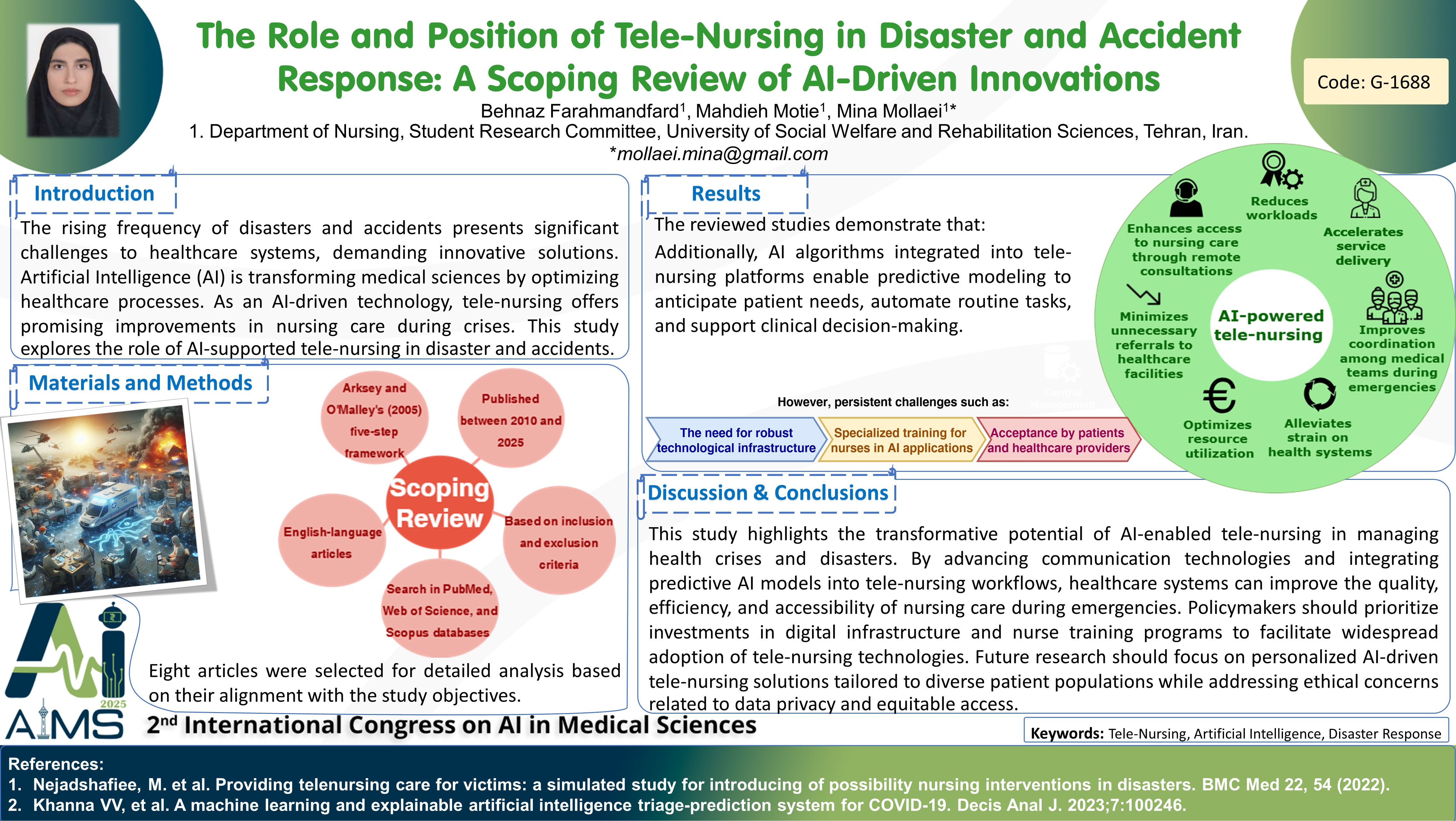نقش و جایگاه پرستاری از راه دور در واکنش به بلایا و حوادث: مروری دامنه ای بر نوآوریهای مبتنی بر هوش مصنوعی
کد: G-1688
نویسندگان: Behnaz Farahmandfard, Mahdieh Motie, Mina Mollaei * ℗
زمان بندی: زمان بندی نشده!
برچسب: سیستم های تصمیم یار بالینی
دانلود: دانلود پوستر
خلاصه مقاله:
خلاصه مقاله
Background: The increasing frequency of disasters and accidents poses critical challenges to healthcare systems, requiring innovative solutions for effective care delivery. Artificial Intelligence (AI) has emerged as a transformative force in medical sciences, offering advanced tools to optimize healthcare processes. Tele-Nursing, as an AI-driven technology, holds significant promise for improving nursing care during crises. This study examines the role of tele-Nursing, supported by AI, in enhancing healthcare delivery during disasters and accidents. Materials and Methods: A scoping review was conducted using Arksey and O'Malley's five-step framework to explore the integration of AI into tele-Nursing. A systematic search of PubMed, Web of Science, and Scopus databases identified English-language articles published between 2010 and 2025. Inclusion criteria focused on studies addressing tele-Nursing applications in emergencies and disasters, while exclusion criteria eliminated articles lacking relevance to AI technologies or crisis management. Eight articles were selected for detailed analysis based on their alignment with the study objectives. Results: The reviewed studies demonstrate that AI-powered tele-Nursing enhances access to nursing care through remote consultations, reduces workloads, accelerates service delivery, and improves coordination among medical teams during emergencies. Additionally, tele-Nursing minimizes unnecessary referrals to healthcare facilities, optimizing resource utilization and alleviating strain on health systems. AI algorithms integrated into tele-Nursing platforms enable predictive modeling to anticipate patient needs, automate routine tasks, and support clinical decision-making. However, challenges such as the need for robust technological infrastructure, specialized training for nurses in AI applications, and acceptance by patients and healthcare providers persist. Conclusion: This study highlights the transformative potential of AI-enabled tele-Nursing in managing health crises and disasters. By advancing communication technologies and integrating predictive AI models into tele-Nursing workflows, healthcare systems can improve the quality, efficiency, and accessibility of nursing care during emergencies. Policymakers should prioritize investments in digital infrastructure and nurse training programs to facilitate widespread adoption of tele-Nursing technologies. Future research should focus on personalized AI-driven tele-Nursing solutions tailored to diverse patient populations while addressing ethical concerns related to data privacy and equitable access.
کلمات کلیدی
Tele-Nursing, Artificial Intelligence, Disaster Response
